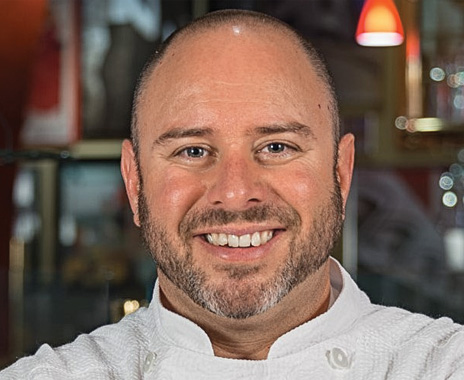There are five basic tastes that the human palate can sense when eating food: salty, sweet, bitter, sour, and umami. In the limited-service restaurant industry, however, salty and sweet (and, recently, umami) have reigned supreme, leaving bitter and sour flavors on the fringe.
But that’s starting to change. Bitter and sour are finding more of a home on limited-service menus, especially in the fast-casual category. Dave Woolley, chef and proprietor of CD Culinary Approach in Denver, talked with us about the five tastes and how R&D chefs can play with new flavors—especially those that are bitter and sour—to create exciting new dishes.
How much do the five tastes play a role when developing foods for quick service and fast casual?
I think it’s constantly a consideration, and the reason why is balance. I’m constantly looking for balance in anything that I do. I do a lot of work with avocado, and avocado has a lot of fat, so I’m constantly trying to think about what other tastes I can bring into it. All chefs think that way; they’re thinking about how they’re going to balance X, Y, or Z, so that it doesn’t just taste good; it tastes great.
Where are consumer preferences today? Salty and sweet seem like no brainers, but are consumers embracing the other tastes?
Yeah. I think there’s been a movement at the finer level that has infiltrated American taste buds, so people are saying, “You know what? I want arugula.” Or, “I want radicchio,” or, “I want that bitter note in my salad now, and I look for it to be in my salad.” As that happens, I think there is a trickle-down effect with the American palate, whether it comes from education, from Food Network, or from social media. More Americans are willing to take a chance on trying more things and different things, and that’s affecting their palates so that when they do go to fast-casual restaurants, their expectations have started to shift.
What platforms are best for bitter and sour flavors?
No question the sandwich, and really a sandwich of every kind. The reason I say sandwich is it’s the easiest way to house contributors from all of the five tastes to get that balance. A salad may be able to fit into that realm too, but I say sandwich because you have that carrier and you have ease; you can make it quickly, you can execute it quickly.
Are bitter and sour harder to balance in menu items?
Sour, no; bitter, yes. Sour, it’s easier to balance out with sweet. Bitter is a little more complex in that regard.
Fermented foods have been mentioned as a good way to bring in bitter and sour notes. What is their place in fast casual?
There’s the trickle-down effect; anything that is remotely trend-forward is usually trickling down, to some degree. In the case of fermentation, it brings more than just sour and bitter. It also brings umami. So there’s another factor that is contributing to balance there. There is subconsciously a craveability factor, and maybe not all fermented food fits there, but certainly kimchi is a good example of that. There’s something that makes your mouth water even when you start mentioning the word, something that makes you salivate. Kimchi has sweet, sour, bitter, umami, and salt, so it literally is a perfect balance of the five tastes.
When [Kogi BBQ founder] Roy Choi started doing kimchi tacos 10 years ago, that was a complete trickle down to where it is right now. I’ve been in five places in the last month that had a kimchi something or other, and they were all fast-casual restaurants.
How important is umami in finding the flavor balance?
As relatively new and buzzwordy as umami has become, a lot of chefs were creating umami and not even realizing it or understanding it. I worked for a burger joint for seven years, and my job was to make somebody salivate. In my first year, I’d heard about umami and experienced umami, but it wasn’t something that I knowingly went for until I learned more about it. It is the duct tape that keeps all of the five tastes in check. When you start to salivate, your palate opens up wider, and you’re just able to pick up on nuances easier because of it.
How much liberty will customers give fast-casual R&D chefs today?
A little bit more than before. But there’s still a Caesar salad on every menu in America. I think there’s a little bit more leeway, but I don’t think it’s everywhere. I think you can get away with it on the coasts easier than you can in mid-America, and I don’t think that will necessarily change. The small chains, somewhere between 10 or 20 units, are the leaders, because they can go a little bit further out on the palate, and those kinds of things can more easily trickle into mid-America. But as a whole, it’s still a tough nut to crack. You’re not just making food for your Texas restaurants; you’re making food for your South Dakota restaurants, too, so you have to think about it in a bigger way.










